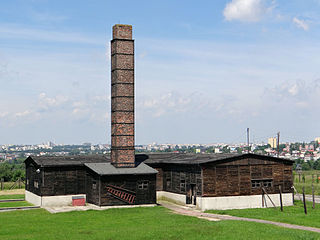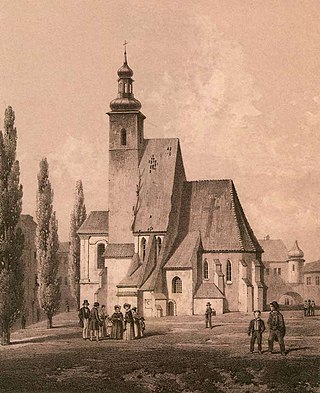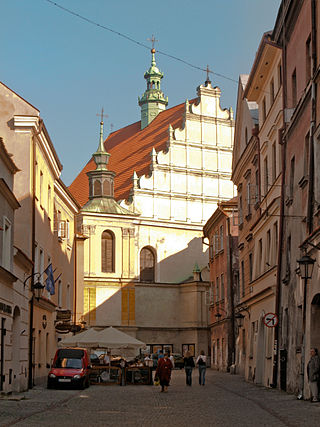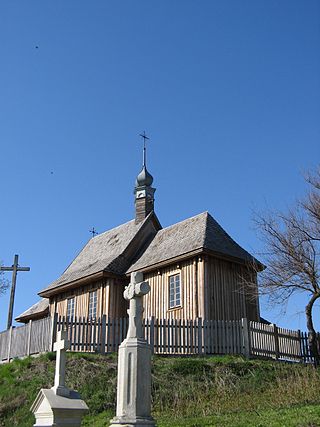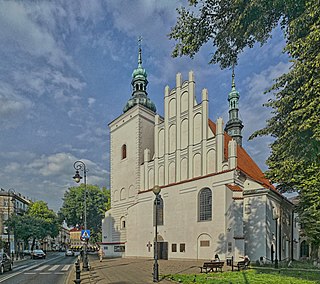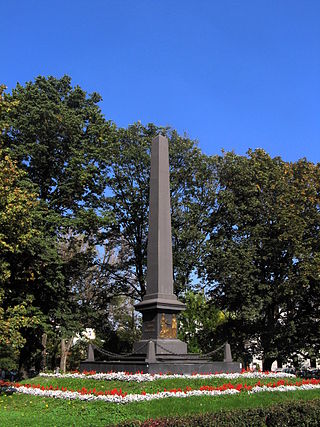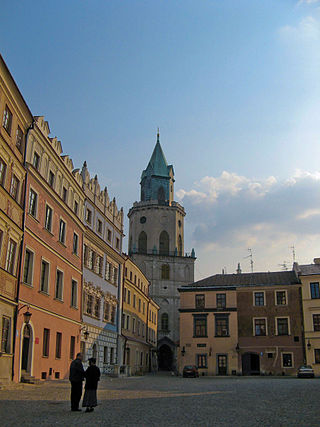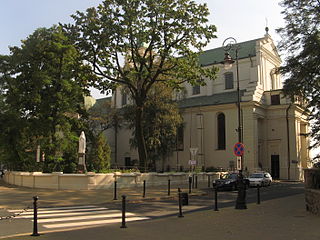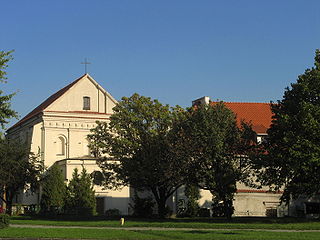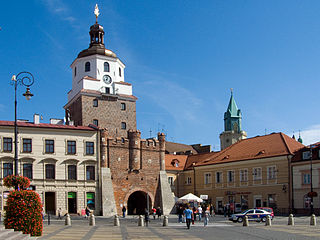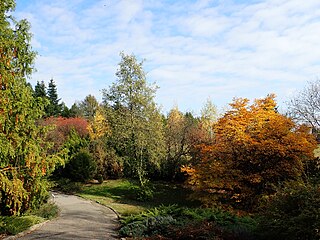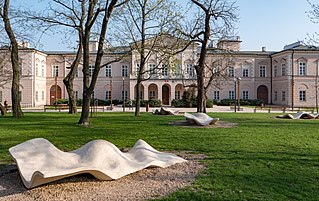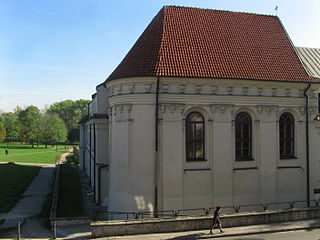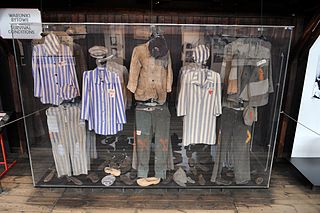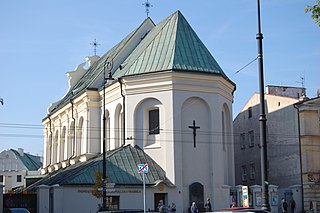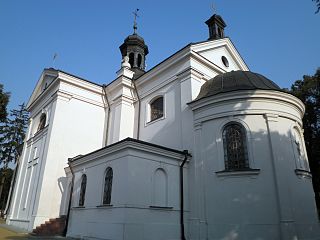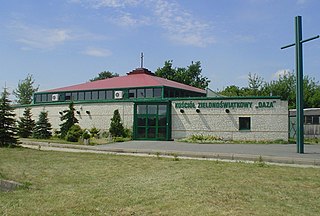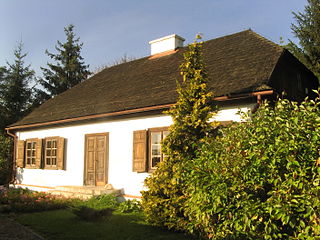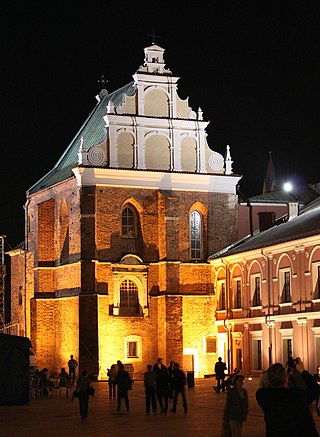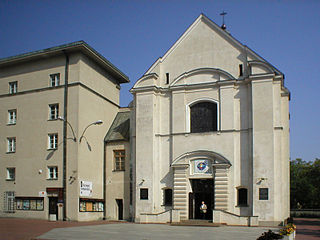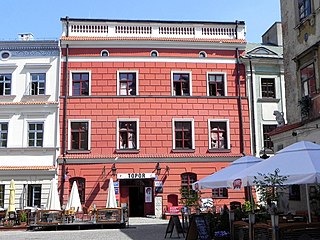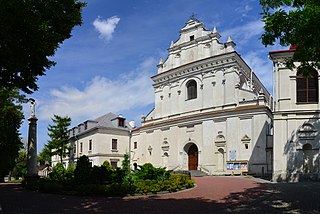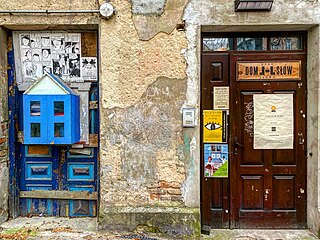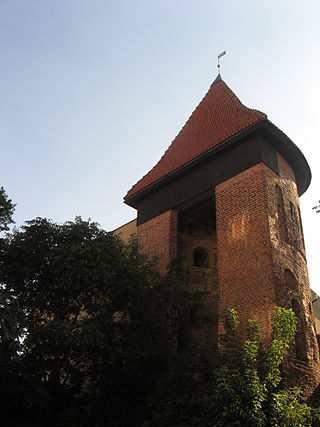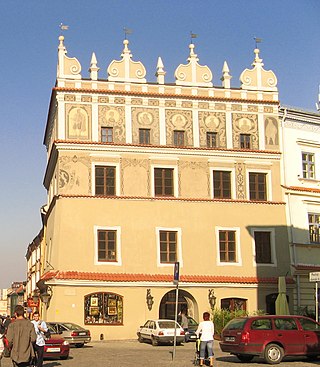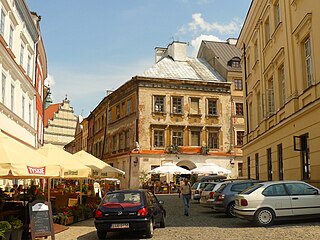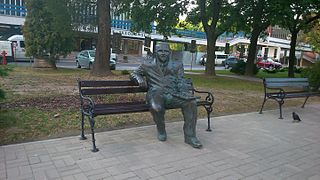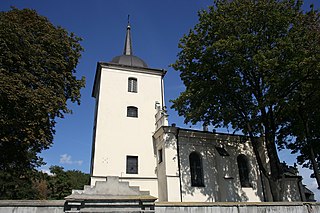32 Sights in Lublin, Poland (with Map and Images)
Legend
Premium Sights
Book tickets, guided tours and activities in Lublin.
Guided Free Walking Tours
Book free guided walking tours in Lublin.
Welcome to your journey through the most beautiful sights in Lublin, Poland! Whether you want to discover the city's historical treasures or experience its modern highlights, you'll find everything your heart desires here. Be inspired by our selection and plan your unforgettable adventure in Lublin. Dive into the diversity of this fascinating city and discover everything it has to offer.
Sightseeing Tours in LublinActivities in Lublin1. German Nazi concentration and extermination camp Majdanek
Majdanek was a Nazi concentration and extermination camp built and operated by the SS on the outskirts of the city of Lublin during the German occupation of Poland in World War II. It had seven gas chambers, two wooden gallows, and some 227 structures in all, placing it among the largest of Nazi concentration camps. Although initially intended for forced labor rather than extermination, it was used to murder people on an industrial scale during Operation Reinhard, the German plan to murder all Polish Jews within their own occupied homeland. In operation from 1 October 1941 to 22 July 1944, it was captured nearly intact. The rapid advance of the Soviet Red Army during Operation Bagration prevented the SS from destroying most of its infrastructure, and Deputy Camp Commandant Anton Thernes failed to remove the most incriminating evidence of war crimes.
2. Fundamenty Kościoła Farnego
Church of St. Michael the Archangel – a Roman Catholic parish church of St. Michael the Archangel in Lublin, one of the oldest temples in the city and the first Gothic church in Lublin. It was demolished in the mid-nineteenth century.
Wikipedia: Kościół św. Michała Archanioła w Lublinie (farny) (PL)
3. Kościół pw. Świętego Stanisława Biskupa i Męczenika
The Basilica of St. Stanislaus the Martyr Bishop, also known as the Basilica of the Holy Cross Relics (Wood) or the Dominican Church – one of the oldest temples in Lublin, together with the monastery, is one of the longest existing institutions of this city.
Wikipedia: Bazylika św. Stanisława Biskupa Męczennika w Lublinie (PL), Url
4. Muzeum Wsi Lubelskiej
The Lublin Village Museum in Lublin – an open-air museum with monuments of wooden and brick architecture and ethnographic collections from the region of the former Lublin Voivodeship, entered into the State Register of Museums.
5. Kościół pw. Wniebowzięcia Najświętszej Maryi Panny Zwycięskiej
The Rector Church of the Assumption of the Blessed Virgin Mary Victorious or the Post-Visitation or Post-Bridgettine Church – one of the most valuable monuments of the Gothic and Renaissance in Lublin.
Wikipedia: Kościół Matki Bożej Zwycięskiej w Lublinie (PL), Website
6. Pomnik Unii Lubelskiej
The Union of Lublin Monument is a monument on Litewski Square in Lublin, erected according to the concept of Stanisław Staszic, designed by Feliks Bentkowski and Paweł Maliński, unveiled on 26 August 1826. It commemorates the union of the Crown of the Kingdom of Poland with the Grand Duchy of Lithuania concluded in Lublin on 1 July 1569. The monument was erected in the place where the nobility came to the Sejm camped and where the sessions took place, opposite the present church and the Capuchin monastery. It is one of the three Lublin sites recognized in March 2007 by the European Union as a symbol of European heritage. At the monument there is the final stop of the Jagiellonian Trail of the Union of Lublin, which leads from the Lublin Castle.
7. Wieża Trynitarska
Trinitarian Tower in Lublin – a neo-Gothic tower-belfry is the highest historic highway point in Lublin. From the viewing platform, at a height of 40 meters, there is a vast panorama of the city. The name of the tower comes from the Trinitarian Order, who stayed in the post-Jesuit monastery buildings located near the tower. Currently, it houses the Archdiocesan Museum.
8. Kościół pw. Nawrócenia Świętego Pawła Apostoła
Bernardine Church of the Conversion of St. Paul in Lublin – a brick church, erected in the years 1470–1497, and then rebuilt after fires in the years 1557–1569 and 1602–1630. Subsequent renovations took place in 1762 and 1790; In 1827, the western gable was rebuilt and a porch was added. Subsequent renovations in the years 1850–1860, in 1903 the façade was rebuilt and the roof was lowered. The church was renovated several times, also in the twentieth century. It is located at 5 Bernardyńska Street.
Wikipedia: Kościół Nawrócenia św. Pawła w Lublinie (PL), Website
9. The Grodzka Gate
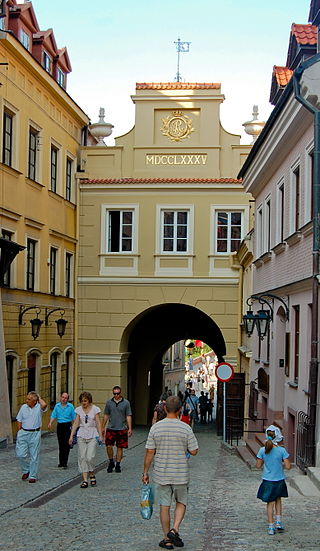
The Grodzka Gate or the Jewish Gate – the city gate in Lublin, the remains of the first brick elements of the city's fortifications, built in 1342, after the permission of Casimir III the Great. The present monument has the shape given to it in 1785 by the court architect of King Stanisław August Poniatowski, Dominik Merlini.
10. Kościół pw. Matki Bożej Wspomożenia Wiernych
The Salesian Church of Our Lady Help of Christians in Lublin – the former monastery of the Franciscan Fathers. They came to Lublin in 1621. In the years 1635-1649, they erected a brick church in the Lublin Renaissance style dedicated to the Blessed Virgin Mary of the Angels and St. Francis on the site of the wooden church of St. Lawrence. The church was built on a swampy area, which is why it was built on wooden logs. The temple was repeatedly fired.
Wikipedia: Kościół Matki Bożej Wspomożenia Wiernych w Lublinie (PL), Website
11. Muzeum Historii Miasta Lublina
The Museum of the History of the City of Lublin is a branch of the National Museum in Lublin. It is located in the building of the historic Krakowska Gate. It was established as the Historical Department in 1965. The permanent exhibition "History of the City" organized there presents the history of Lublin from the settlement period to 1944. The exhibits are located on four floors, around a spiral staircase. From the top floor, you can watch the panorama of the city in all directions.
12. Ogród Botaniczny UMCS
The Botanical Garden of the Maria Curie-Skłodowska University is a botanical garden located in the Lublin district of Sławin, belonging to the Maria Curie-Skłodowska University. It was created in 1965 and opened to the public in 1974.
Wikipedia: Ogród Botaniczny Uniwersytetu Marii Curie-Skłodowskiej (PL), Website
13. Pałac Lubomirskich
The Lubomirski Palace or the Radziwiłłowski Palace – a palace in Lublin erected in the Baroque style, then rebuilt in the Classicist style. The history of the building dates back to the sixteenth century, and its current appearance is due to the reconstruction of 1829. It is located on Litewski Square between the Czartoryski and Gubernialny palaces.
14. Kościół pw. Świętego Wojciecha Biskupa i Męczennika
St. Adalbert's Church in Lublin – the hospital church of St. Adalbert is a rector's building. The brick, late-Renaissance church was built in the years 1610-1635. Renovated in 1756, then adapted into a warehouse in 1835, it was restored in the years 1923–1930. Further restoration works were carried out in 1970 and 1974.
15. Kamienica Archidiakońska 7
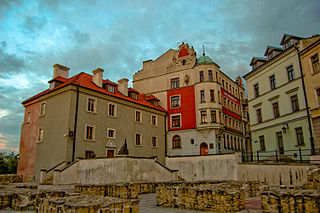
Mansionary house, mansionary or vicar house – a fifteenth-century monument in the complex of the former parish church of St. Michael in the Old Town in Lublin, at 9 Archidiakońska Street. Later, the building was rebuilt many times, before World War II it served, m.in others, as a tenement house. Currently, the entire apartment is an independent apartment.
16. Majdanek State Museum
The Majdanek State Museum is a memorial museum and education centre founded in the fall of 1944 on the grounds of the Nazi Germany Majdanek death camp located in Lublin, Poland. It was the first museum of its kind in the world, devoted entirely to the memory of atrocities committed in the network of concentration, slave-labor, and extermination camps and subcamps of KL Lublin during World War II. The museum performs several tasks including scholarly research into the Holocaust in Poland. It houses a permanent collection of rare artifacts, archival photographs, and testimony.
17. Kościół pw. Świętego Piotra Apostoła
The Church of St. Peter the Apostle in Lublin – a historic Roman Catholic church located in Lublin, built in the years 1636–1658. Until the fire in 1768, it bore the hallmarks of the Lublin Renaissance. In 1780, the reconstruction was completed, giving the church a Baroque style. The interior, covered in 1899 with neo-baroque polychrome by Władysław Barwicki, was also transformed. Since 1920, the church belonged to the Jesuits, who in November 2015 gave it to the Archdiocese of Lublin.
18. Kościół pw. Świętego Jakuba Apostoła
Church of St. James the Apostle in Lublin – a historic late-Baroque Roman Catholic brick church from the eighteenth century, located in Lublin at 145 Głuska Street. Historically, it is located in the former town of Głusk or the former village of Abramowice Kościelne.
Wikipedia: Kościół św. Jakuba Apostoła w Lublinie (PL), Website
19. Kościół Zielonoświątkowy „Oaza”
The Pentecostal Church "Oaza" in Lublin – the largest evangelical church in Lublin, which is a Christian Protestant community of a Pentecostal character. It belongs to the eastern district of the Pentecostal Church in Poland.
Wikipedia: Zbór Kościoła Zielonoświątkowego „Oaza” w Lublinie (PL)
20. Dworek Wincentego Pola
Wincenty Pol's Manor House in Lublin – a biographical museum of Wincenty Pol located in a classicist manor house erected at the end of the 18th century on the premises of a small manor farm Firlejowszczyzna near Lublin.
21. Kaplica pw. Świętej Trójcy
The Chapel of the Holy Trinity, also known as Lublin Castle Chapel, is a Gothic chapel with a Renaissance gable located within the courtyard of Lublin Castle in Lublin, Poland. The chapel adjoins the museum of the castle complex and is an integral part of the site. It is known for its fifteenth-century frescoes in the Byzantine or Orthodox style, unusual for Catholic Poland.
22. Kościół pw. Świętego Krzyża
The church of the Holy Cross in Lublin - the Roman Catholic church of the Holy Cross at Idziego Radziszewskiego 7 in Lublin, in the Archdiocese of Lublin. The original church was created according to legend in 1434, when the Gdańsk merchant Henryk tried to steal the Lublin relic of the Holy Cross tree from the Dominican church. Under the cover of the night he wanted to take a relic from the city, but outside the walls of the oxen they stood and did not want to continue to pull the car. The terrified Henry turned to the city, gave the relic, and then founded a wooden church in a miraculous event. The original church existed until the beginning of the 17th century, when the councilors of Lublin wanted to create a second parish in the large city at the time, and therefore on the site of the old wooden church of St. The cross was issued by a new, brick. The creation of the second parish in Lublin did not occur then, in return, the personal state of the clergy of the Lublin parish church was increased. Michał, and the church of St. At the end of the 17th century, the cross was taken over by the Dominicans of observers who built a monastery next to it. The monks stayed here to the Third Partition of Poland, after which the Austrian government deleted "non -usable" monasteries. The Lublin monastery of the Dominican observers was turned into barracks, expanding it significantly. Barracks so -called Świętokrzyskie was located in it until the beginning. The 1920s, when the buildings were put into use to the newly established University of Lublin, which is still there. In the interwar years, the band's buildings, especially the church, were renovated and partly rebuilt under the direction and according to Marian Lalewicz's projects.
23. Piwnica pod Fortuną
Piwnica pod Fortuną – a room with historic polychromes in the Lubomelski tenement house at Rynek 8 in Lublin. Until February 2018, the complex of cellars under the tenement house was managed by the Lublin Regional Tourist Organization; since then, the place has been under the care of the Lublin Underground Route of the "Grodzka Gate – NN Theatre" Centre. The basement is a year-round facility, open every day. Admission is paid.
24. Kościół pw. Świętej Agnieszki
Church of St. Agnes in Lublin – a Roman Catholic church built together with the Augustinian monastery in the years 1647-1667 in the Kalinowszczyzna, which was a separate jurisdiction, expanded after 1685, currently a parish church.
25. Dom Słów- Izba Drukarstwa
The House of Words – museum of typography in Poland, is a multimodal education center. It familiarizes audience with poetry and art, old techniques of printing, and the history and achievements of Lublin printing industry.
26. Baszta Gotycka
The Gothic Tower, due to its shape, also known as the Semicircular Tower – a Gothic tower in Lublin. Reconstructed in the 80s of the twentieth century, which is, together with a fragment of the defensive walls, a testimony to the Gothic fortifications of the Old Town. The tower was built in 1341 together with defensive walls, made of stone and faced with bricks. Wooden platforms allowed defenders access to the embrasures. The shooting porches allowing access to the slit and key loopholes have not survived.
27. Muzeum Literackie imienia Józefa Czechowicza
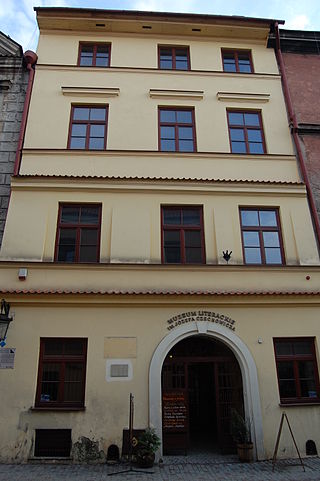
The Józef Czechowicz Literary Museum is a branch of the National Museum in Lublin. The main purpose of the institution is to collect, store, process and make available manuscripts, exhibits, publications and scientific materials related to the life and work of Józef Czechowicz, as well as other writers from the Lublin region. It is located in the Old Town of Lublin.
Wikipedia: Muzeum Literackie im. Józefa Czechowicza w Lublinie (PL)
28. kamienica Chociszewska
Chociszewska Tenement House – a tenement house at the Lublin Market Square with number 6, which begins the so-called "Lubomelski side" of the Old Town. In 1524, its owner was councillor Adam Doydzwon, and then Barbara Skromowska. In this tenement house, fragments of late-Gothic window frames were discovered. After 1630, the tenement house became the property of the Chociszewski family, hence its name – Chociszewska.
Wikipedia: Kamienica Chociszewska w Lublinie (PL), Url, Url 0
29. kamienica pod lwami
The House Under the Lions – also known as the Cholewin Tenement House, a Renaissance tenement house in Lublin, originally owned by Jerzy Organista. Its cornice is decorated with three lions carved in stone.
30. Ławeczka Henryka Raabego
The bench of Henryk Raabe, the first rector of the Maria Curie-Skłodowska University, is located in Lublin on the square named after the patron of the University, on the campus of the Maria Curie-Skłodowska University. The author of the monumental sculpture is the sculptor Benedykt Popek from Masuria in the Podkarpackie region.
31. Kościół pw. Świętego Jozafata
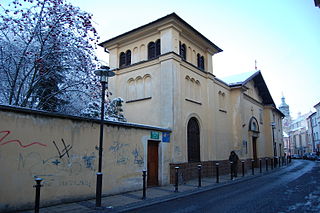
Church of St. Josaphat in Lublin was built by Greek merchants in 1786 upon the consent of king Stanisław August Poniatowski. In the second half of the 19th century the temple which was originally dependent on the patriarch of Constantinople was taken over by the Russian Orthodox Church and in 1922 it became the property of the Roman Catholic Church. At present it is Saint Josaphat's church which until recently was also used by Greek Catholics.
32. Cerkiew Przemienienia Pańskiego
Cathedral of the Transfiguration is an Orthodox cathedral in Lublin, and the main church of the Diocese of Lublin and Chełm of the Polish Orthodox Church. It also serves as the seat of the Lublin Parish of the Transfiguration. The cathedral is located on Ruska Street.
Share
How likely are you to recommend us?
Disclaimer Please be aware of your surroundings and do not enter private property. We are not liable for any damages that occur during the tours.
